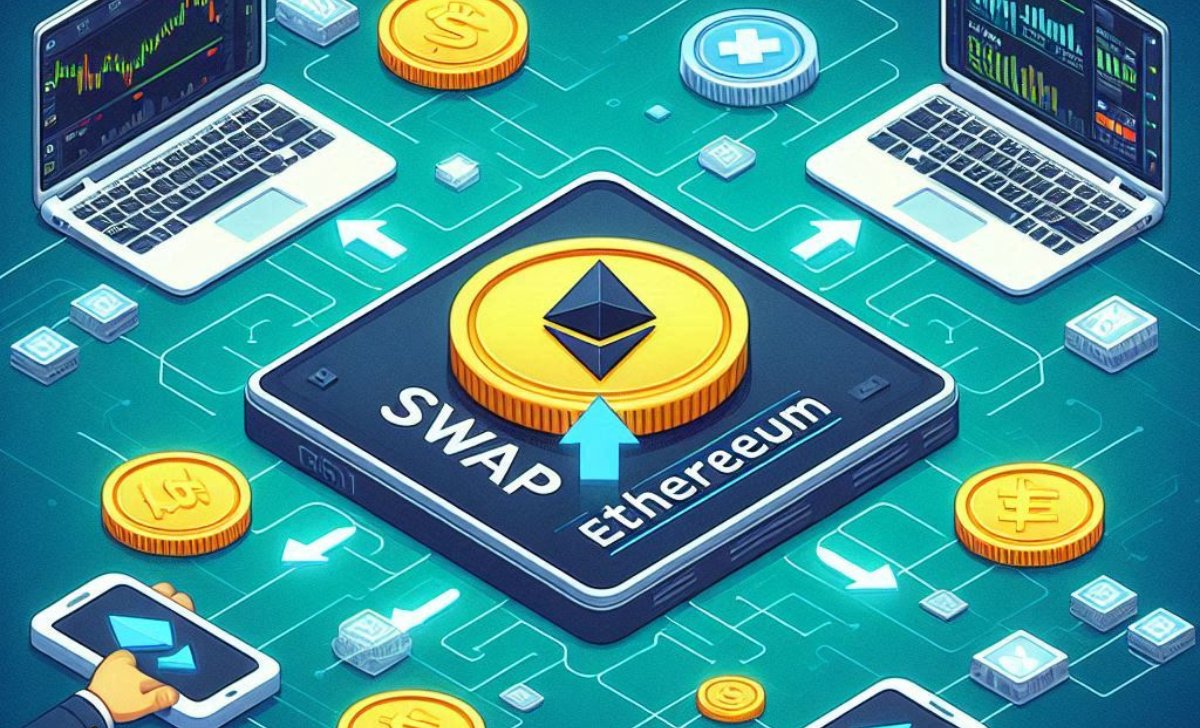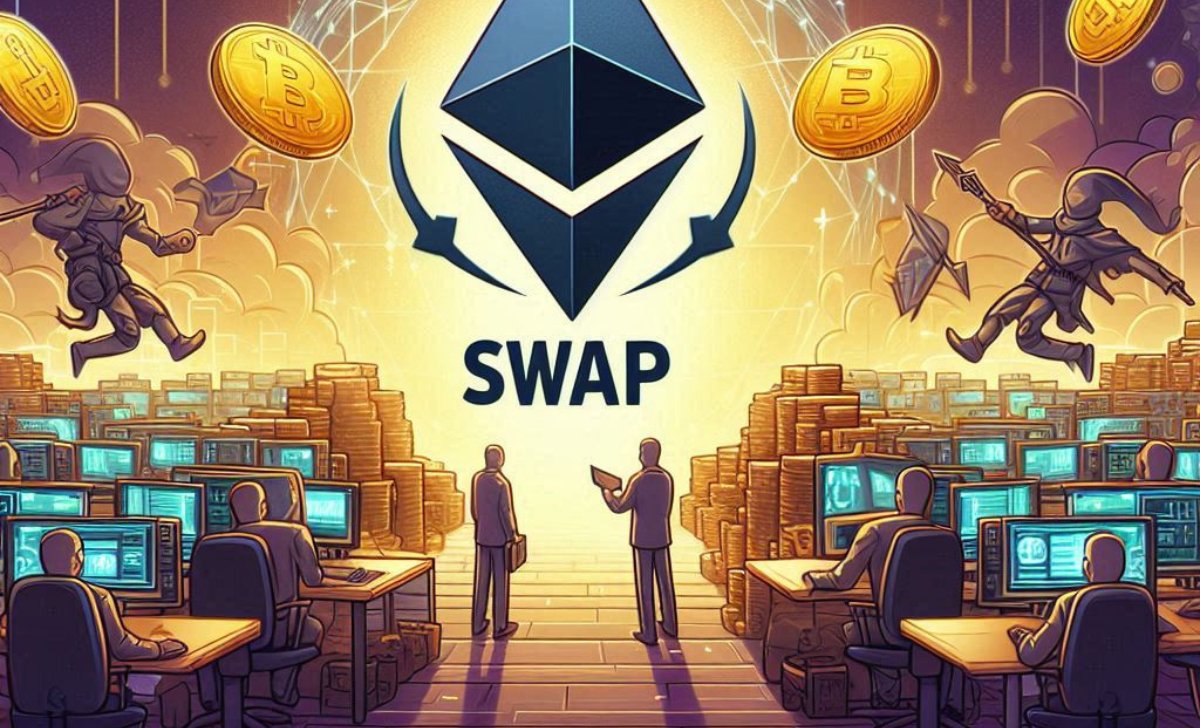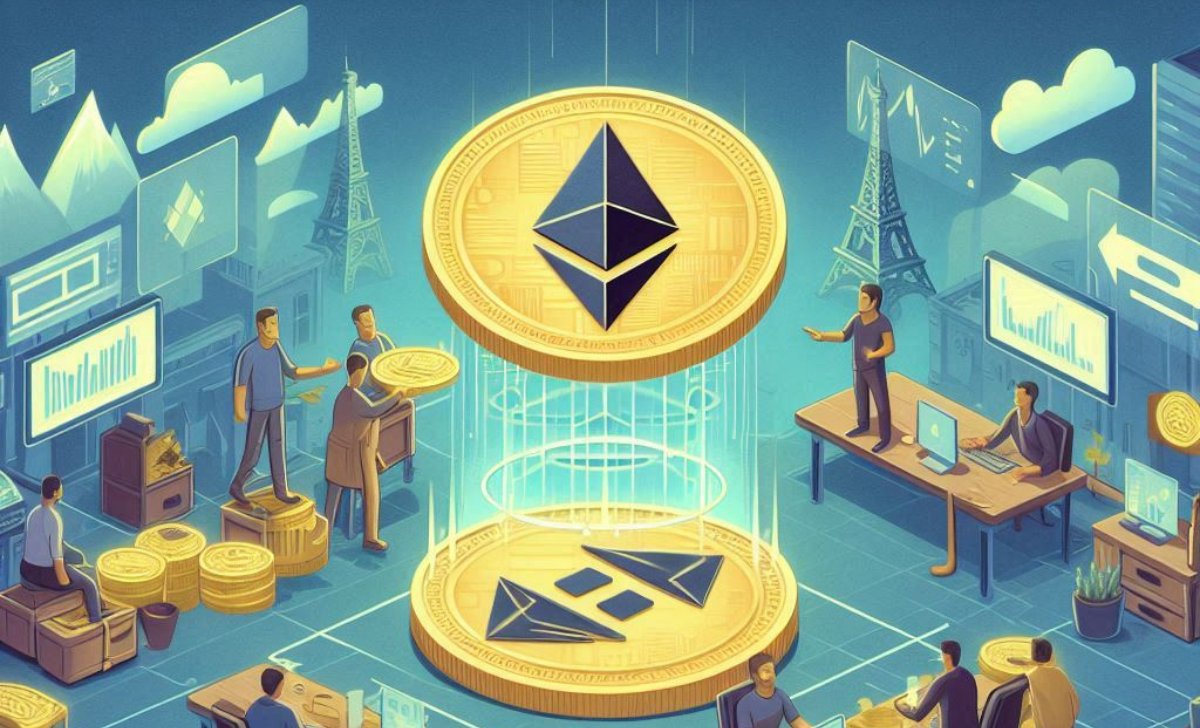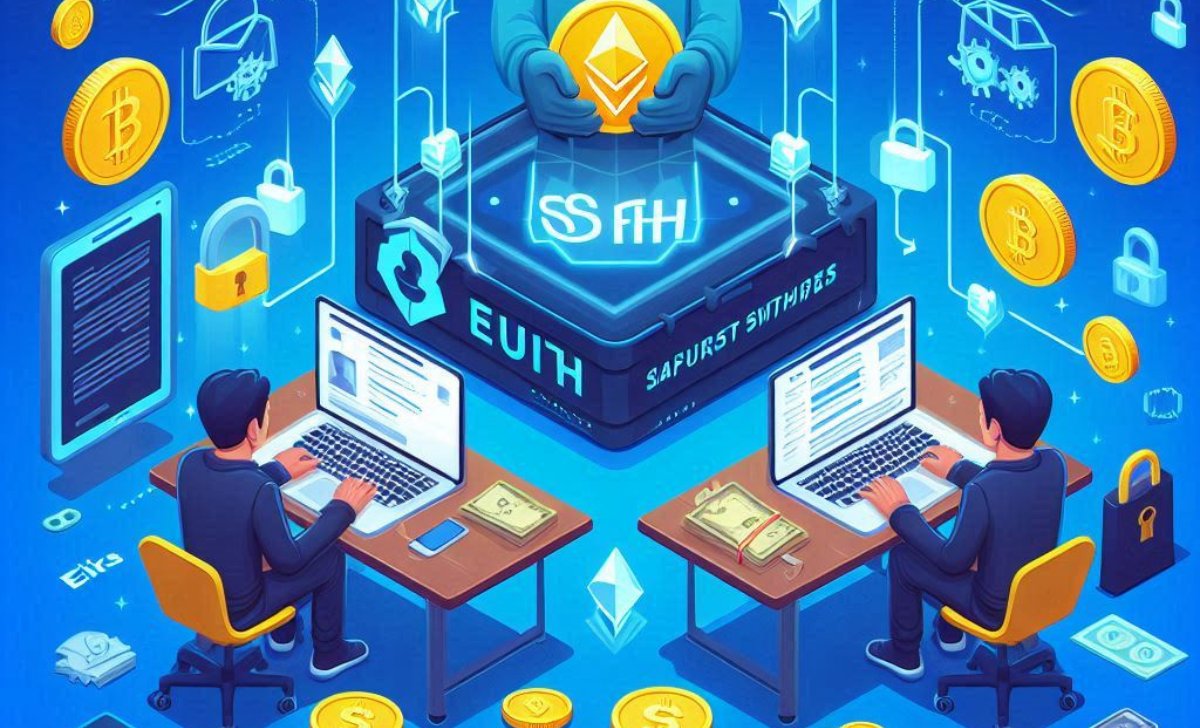Swap Ethereum is a crucial skill for anyone exploring DeFi, NFTs, or ERC‑20 token investments. It allows you to trade ETH for thousands of compatible tokens directly on blockchain, without relying on centralized exchanges.
In this guide of TopCoin9, you’ll discover everything from what token swapping is, why it’s useful, best platforms to use, step-by-step instructions, risks and security tips, fees involved, and popular alternatives—all covered in the sections below.
What Is Token Swapping on Ethereum?

Token swapping on Ethereum refers to exchanging one cryptocurrency (typically ETH) for another ERC-20 token directly on the Ethereum blockchain. Unlike traditional trading, where you might place a buy/sell order on a centralized exchange, token swaps are executed via smart contracts on decentralized platforms.
According to Investopedia (2023), smart contracts are self-executing contracts with the terms written in code. These contracts allow swaps to occur without intermediaries, making them trustless and secure.
For example, if you want to exchange ETH for USDC, you can do so using a decentralized exchange (DEX) like Uniswap or SushiSwap, which automatically matches your trade with liquidity providers.
Token swapping is fast, seamless, and available 24/7. It also opens the door to DeFi opportunities like staking, lending, and liquidity mining.
Now that you know what token swapping is, let’s explore why you should swap Ethereum in the first place through the content below!
Why Swap Ethereum for ERC‑20 Tokens?
Swap Ethereum is more than just a transaction — it’s a gateway into Ethereum’s broader DeFi ecosystem. Here are the key reasons why crypto users swap Ethereum:
- Access DeFi Protocols: Most DeFi apps require ERC-20 tokens (like DAI, USDC, AAVE) rather than ETH.
- Stablecoins for Stability: ETH can be volatile. Swapping it for USDT or USDC gives you stability.
- Yield Farming: Many platforms reward users who stake ERC-20 tokens.
- Portfolio Diversification: You can hedge risk or gain exposure to other tokens with high growth potential.
As highlighted by CoinDesk (2024), more than $80 billion in assets are locked in DeFi protocols, most of which operate on Ethereum. Swapping ETH into compatible tokens is the first step toward interacting with these platforms.
Ready to start swapping? First, you’ll need to choose the right platform. Let’s explore that in the next section!
Best Platforms to Swap Ethereum

When it comes to token swaps, Swap Ethereum users often rely on DEXs (decentralized exchanges) or aggregators. Here are the most trusted platforms:
- Uniswap: The pioneer of DEXs, offering high liquidity and simple UI.
- SushiSwap: A Uniswap fork with additional community features.
- 1inch: A DEX aggregator that finds the best prices across multiple exchanges.
- MetaMask Swap: Integrated into the MetaMask wallet for ease of use.
Each platform uses automated market makers (AMMs) and smart contracts to handle swaps transparently. According to Ethereum.org (2023), DEXs offer users full control of their assets, unlike centralized exchanges that hold user funds.
Make sure to verify URLs and contract addresses before proceeding. Always prefer audited protocols when you swap Ethereum to avoid scams or smart contract bugs.
Let’s move on to a hands-on section: how to actually swap ETH for ERC-20 tokens. Details will be revealed in the content below!
How to Swap Ethereum Step-by-Step
Swap Ethereum for tokens like DAI, USDC, or UNI is easy, even for beginners. Here’s how to do it using MetaMask and Uniswap:
- Step 1: Connect Your Wallet: Download and open MetaMask or Trust Wallet, then switch to the Ethereum Mainnet. According to Ethereum.org, 2024, these wallets are among the most secure options for managing ETH.
- Step 2: Choose a Platform: Visit a reputable decentralized exchange like Uniswap.org, which processes billions in monthly trading volume (CoinGecko, 2024). Ensure your wallet is securely connected before proceeding.
- Step 3: Select Token Pair: Choose ETH as the input and an ERC-20 token (such as USDC or DAI) as the output. ERC-20 is Ethereum’s standard for fungible tokens (Wikipedia, 2023).
- Step 4: Set Amount and Slippage: Enter the amount of ETH you want to swap and set slippage tolerance (commonly 0.5%–1%). Slippage helps protect you from price fluctuations during the transaction (Investopedia, 2023).
- Step 5: Confirm Swap: Review the estimated gas fees and confirm the transaction. You can track the transaction’s progress using tools like Etherscan.io (2024), Ethereum’s official block explorer.
After mastering the basics, it’s essential to protect yourself. Let’s talk about risks and how to stay safe when swapping in the next part!
Risks and Security Tips When Swapping ETH

While token swaps are convenient, they come with security risks:
- Smart Contract Vulnerabilities: Always use decentralized exchanges and tokens that have been audited by trusted firms like CertiK or Hacken. These audits help minimize bugs and vulnerabilities in smart contracts (CertiK.com, 2024).
- Phishing Sites: Be cautious of lookalike websites; always double-check URLs before connecting your wallet. Fake sites often mimic platforms like Uniswap to steal funds (Chainalysis, 2023).
- Fake Tokens: Many scams involve fake ERC-20 tokens with misleading names. Always verify token contract addresses on platforms like CoinGecko or Etherscan.io (2024).
- Use Token Analysis Tools: Tools like Token Scanner or RugDoc allow you to check token risks before swapping. These tools flag suspicious contract behavior and common scam patterns.
- Revoke Risky Permissions: Use Revoke.cash to remove unnecessary token approvals from your wallet. This prevents malicious smart contracts from accessing your funds unexpectedly.
- Keep Wallets Updated: Always update your software wallets to the latest version. Updates include critical security patches that guard against exploits (Ethereum.org, 2024).
As highlighted by Chainalysis (2023), scams accounted for over $1.6 billion in losses last year. Practicing good DeFi hygiene can prevent becoming part of that statistic.
Speaking of costs — do you know how much it really costs to swap Ethereum? Let’s break it down!
Fees and Slippage in ETH Swaps
Two main costs come into play when you swap Ethereum:
- Gas Fees: These are fees paid to Ethereum miners. They vary based on network congestion. Use tools like ETH Gas Station to find optimal times.
- Platform Fees: Uniswap charges 0.3% per trade, while aggregators like 1inch may save costs through route optimization.
- Slippage: This refers to price changes between when you initiate and confirm a swap. High volatility or low liquidity increases slippage.
But what if you want alternatives to swapping directly on Ethereum? Let’s explore other options next.
Alternatives to Swapping Ethereum

Although on-chain swaps are powerful, they’re not your only option. Here are some alternatives:
- Centralized Exchanges (CEXs): Binance, Coinbase, and Kraken allow ETH-to-token conversions with lower slippage and faster execution.
- OTC Desks: For large trades ($10k+), Over-the-Counter services offer better rates.
- DEX Aggregators: Platforms like 1inch or Matcha optimize trades by splitting them across multiple DEXs.
For those new to crypto, starting on CEXs may be safer. However, on-chain methods give you full custody and control, aligning with the ethos of decentralization (Wikipedia, 2024).
Still got questions? Let’s clear them up in the FAQ section though the next content!
FAQs About Ethereum Swaps
- Do I need ETH to pay gas fees when swapping? Yes, always keep a small amount of ETH in your wallet for transaction fees.
- Can I cancel a swap after confirming? No, Ethereum transactions are irreversible once broadcast.
- Is swapping Ethereum taxable? In most countries, yes. Swaps count as taxable events. Consult local tax guidelines.
- Can I swap ETH using a hardware wallet? Yes, hardware wallets like Ledger and Trezor support swaps via WalletConnect or browser extensions.
Conclusion
Learning how to swap Ethereum empowers you to access DeFi, trade tokens, and grow your crypto portfolio—all without relying on centralized exchanges. By using trusted platforms, following safe practices, and understanding fees, you can make the most out of every ETH transaction. Thank you for reading this article, and be sure to follow us for more in-depth crypto guides, updates, and expert tips to help you navigate the world of decentralized finance.

Ethan Carter, a seasoned crypto analyst with 7+ years of experience, has a deep understanding of market trends, DeFi, and blockchain technologies. His expert insights and market forecasts have helped thousands of traders and investors make informed decisions.
Email: [email protected]












